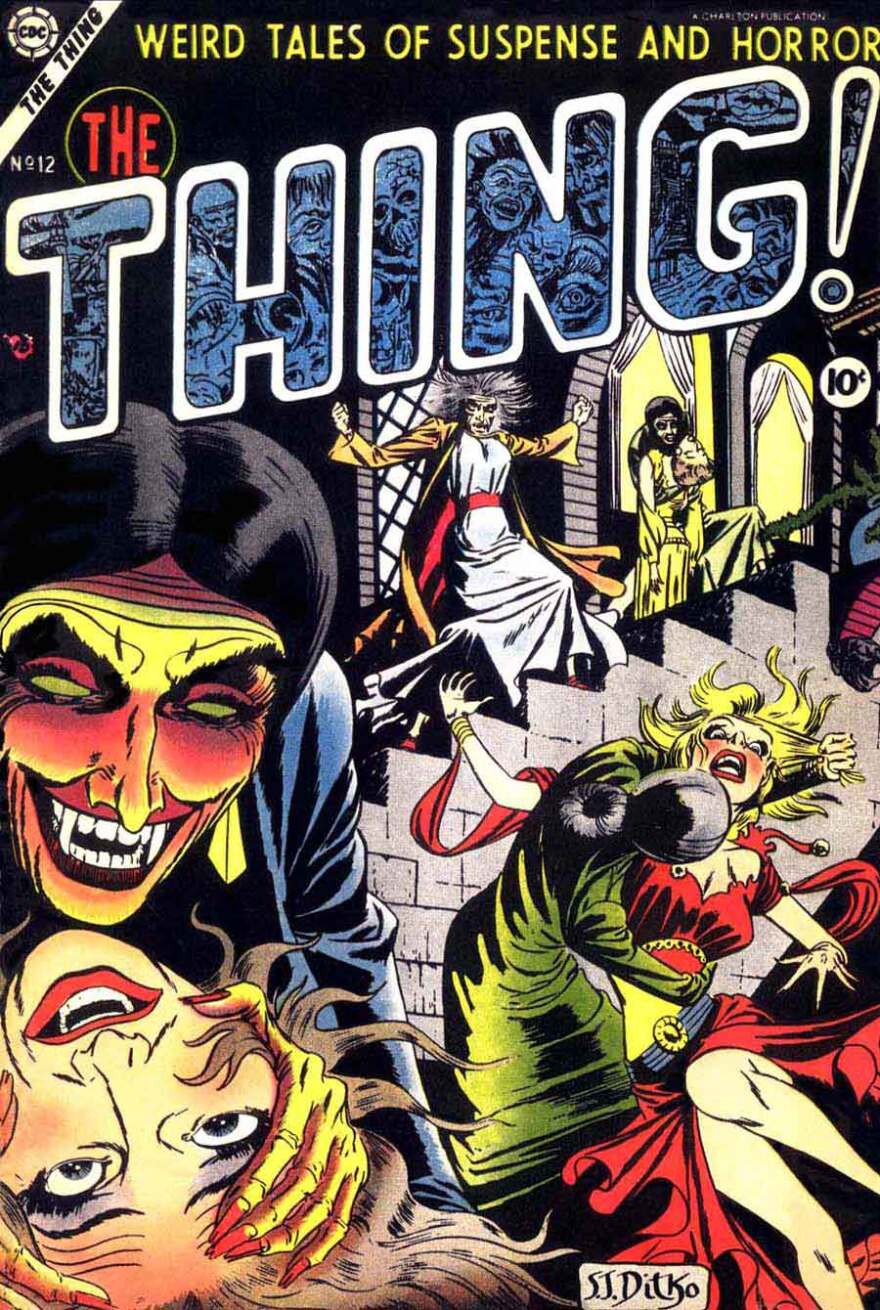The collection of new stories can be ordered online starting this month, and the creators are already working on a second issue.
What began as a joke on Facebook ended up reviving the work of a Connecticut-based comic book company that went out of business more than 30 years ago.
It started when a fan commented on a Charlton Comics Facebook group that someone should publish a new magazine, but writer Paul Kupperberg responded, and that ended up with enough artists signing on for a 44-page book: the Charlton Arrow. It got the attention of new artists, as well as veterans like Paul Kupperberg, Joe Staton and Roger McKenzie, artists who worked at Charlton Comics and went on to work on characters like Captain America, Daredevil, Batman and the Green Lantern. The collection of new stories can be ordered online starting this month, and the creators are already working on a second issue.

The company used to do everything from the artwork to publishing to distribution, from a small factory in Derby, Connecticut. DC comics bought some of the Charlton characters, like Captain Atom, after Charlton went out of business in the 1980s, and a team of characters from Charlton ended up being the inspiration for the Watchmen series from Alan Moore.
For the most part, Charlton was very different from the two major players, Marvel and DC, said Mort Todd, who is one of the editors of the Charlton Arrow and has edited at Marvel comics and Cracked Magazine, among other outlets. Todd said as a comic book reader in the 70s, he was a snob who read the work from Marvel and DC, whereas his brother would read the Charlton books.
“Charlton had a reputation for being a shoddier outfit basically because they had their own printing presses,” Todd said. “They used a cheaper paper, sometimes their color separation didn't match, they were a little off askew...they kind of had a reputation as the poverty row of comics.”
That's because Charlton was a publishing company that produced magazines like the rock and roll publication Hit Parader, and only printed comics to keep the presses running. But despite the low cost of production Todd described, Charlton comics managed to develop a fan base.

For one thing, having a goal of just printing comics meant the comic book line could experiment with many more genres without much editorial oversight of the artists, at a time when Marvel and DC focused on superheroes.
“Charlton had a wide range of titles ranging from humor to horror to war to romance and did a lot of subjects that other companies couldn't be bothered with,” Todd said. “The comics medium is a lot like film: if movies only made Westerns, it wouldn't be too appealing and that's sort of what happened with comics.”
Charlton did feature what they called "action heroes," because "superhero" is jointly trademarked by Marvel and DC. Another way that Charlton stood out, and kept the cost down, was by doing everything from one location in Connecticut. That actually benefited the artists, said Frank McLaughlin, who used to work as an editor of comics at Charlton in the mid 60s and went on to work on titles like Batman and Superman for DC Comics.
McLaughlin, who now teaches art at the Paier College of Art in Hamden, remembered walking around the building and seeing the offices of the publishers and accounts, past the artists and editors working on the comics, to the rooms where the magazines were bound, stapled and printed, and finally reaching the distribution area where trucks would load new issues to be shipped for sale.

“People that went from Charlton to any other publisher had a working knowledge of how every facet of the business worked, and they were invaluable to the new publisher,” McLaughlin said. “Once a work had got out of DC, most of [the artists] had no idea what happened to the work, from one step to the next step to shipping.”
Some prominent artists worked at Charlton, including Steve Ditko, who is best known as a co-creator of Spider-Man and Dr. Strange. Despite the company paying the artists $5.00 to $7.00 a page, which was a low-wage even back in those days, Charlton managed to get artists to put their heart into their work, said Paul Kupperberg, who went on to become a best-selling writer for Archie Comics.
“A lot of great artists [were] doing amazing work just based on the fact that they were left alone to do it by the company,” Kupperberg said. “I always call Charlton the little company that could...they were just off in their own corner doing their own little thing, and there was just something very charming and eccentric about what they did, and it's not a surprise that it had fans then and it continues to have fans today.”












